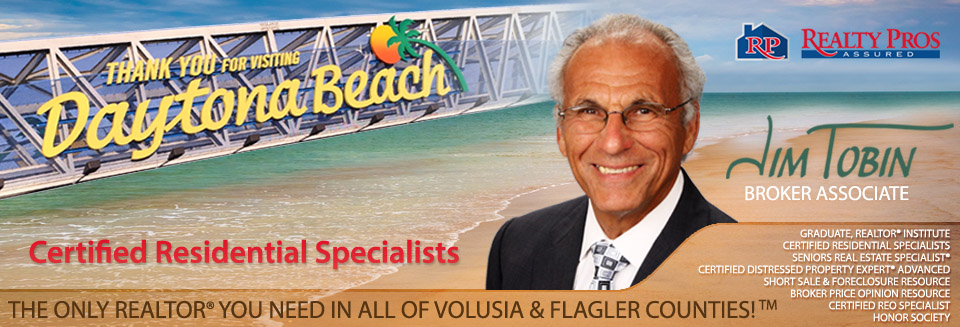
The Mortgage Crisis
Jim Tobin understands the impact that the choice of mortgage provider has on the buying and selling experience that is why Jim Tobin has put together a team of mortgage providers to meet your high standards of service and expertise. These mortgage partners can assist you in identifying and implementing the best financing solution for even the most complex situation, and they have the resources and service focus required to make the closing process as smooth and successful as possible.
How Big is the Problem Anyway?
Today, more homeowners than imagined are in some sort of financial distress. Historically, at any given time, there are always a certain percentage of homeowners that can’t pay their mortgage. In a healthy market, typically 1 to 3% of properties fall into this category. Today, this number is frighteningly higher; as many as 1 out of 25 homes are at some stage of the foreclosure process, and here in our area that figure is 1 out of 4 homes.
Not only have foreclosures been going up exponentially since 2005, so are defaults or missed payments before the foreclosure process begins. It is important to note that as part of this debacle, mortgages actually were being written and closed where homeowners could not even make the first payment. Nationally, 1% of all mortgages (ARMs, non-ARMs, sub-prime and conventional) are in foreclosure and 6.35% are not making payments.
In a HousingWire article released September 2, 2008, there is grave concern since Option ARM loans will soon reset. An Option ARM is a loan whereby the interest rate adjusts monthly and the payment adjusts annually. The options include interest-only, and a "minimum" payment that is usually less than the interest-only payment. The minimum payment option results in a growing loan balance, termed "negative amortization".
The facts are:
- $96 billion in Option Arms will be reset
- 90-day+ delinquencies, already ranging from 10-24% could more than double;
- The potential payment increase on these loans will be 63%; and
- Option ARM defaults are expected to spread into more expensive neighborhoods & higher priced homes.
In data released by HOPE NOW on August 28, 2008, it is clear that problems have spread to prime credit borrowers as well. Recently, prime foreclosure starts moved ahead of sub-prime foreclosure starts. In July 2008, foreclosures were initiated on 105,000 prime borrowers and 92,000 sub-prime borrowers. These starts on prime foreclosures are more than double the same time last year and are 10% higher than in June 2008. Sub-prime foreclosure starts are up 22% over last year and 10% since June as well.
As a Certified Distressed Property Expert, I have the knowledge and systems to help people find solutions to their financial problems well in advance of the foreclosure process starting. If a homeowner qualifies for a Short Sale, there are huge benefits to going that route -- most importantly there is little to no blemish on your credit report, you typically can negotiate the deficiency with the bank and, today, if your home is a primary residence and worth less than $2 million, you may not have to pay tax on the deficiency.
If you want to learn more about this or you have a question for me, call me at 386.405.4411 or email me at JimTobin@cfl.rr.com.
What is a Sub-Prime Loan?
This is a marketing term for high risk loans previously referred to as “B and C” loans. Over time, these loans became riskier and riskier. The purpose behind these loans was to increase a buyer’s purchasing power. These loans first were allowed for up to 36% of net income and later were allowed for up to 50% of net income. They also were written for an extended period of time, i.g., 40 or 50 years, rather than the typically 30 or 15 year loans. There were interest-only loans where the homeowner only pays the interest and does not pay any principal on the debt. Finally, there were option arms which could double the borrowing power of the same borrower.
For More Information About Your Ability To Avoid Foreclosure, Contact Jim Tobin at JimTobin@cfl.rr.com. A specialist will contact you within 24 hours to discuss this with you in full.
* A primary resource for this information is the Distressed Property Institute, LLC. www.distressedpropertyinstitute.com
Email: JimTobin@cfl.rr.com—386.405.4411—Fax: 386.673.5242
GRI, CDPE, SRES, SFR, BPOR, REOS
Broker Associate - Realtor
Graduate, REALTOR® Institute
Certified Residential Specialists
Seniors Real Estate Specialist®
Certified Distressed Property Expert® - Advanced
Short Sale & Foreclosure Resource
Broker Price Opinion Resource
Certified REO Specialist
Honor Society

Cell 386-405-4411
Fax: 386-673-5242
Email:
©2025 Jim Tobin - all rights reserved. | Site Map | Privacy Policy | Zgraph Daytona Beach Web Design | Accessibility Statement

